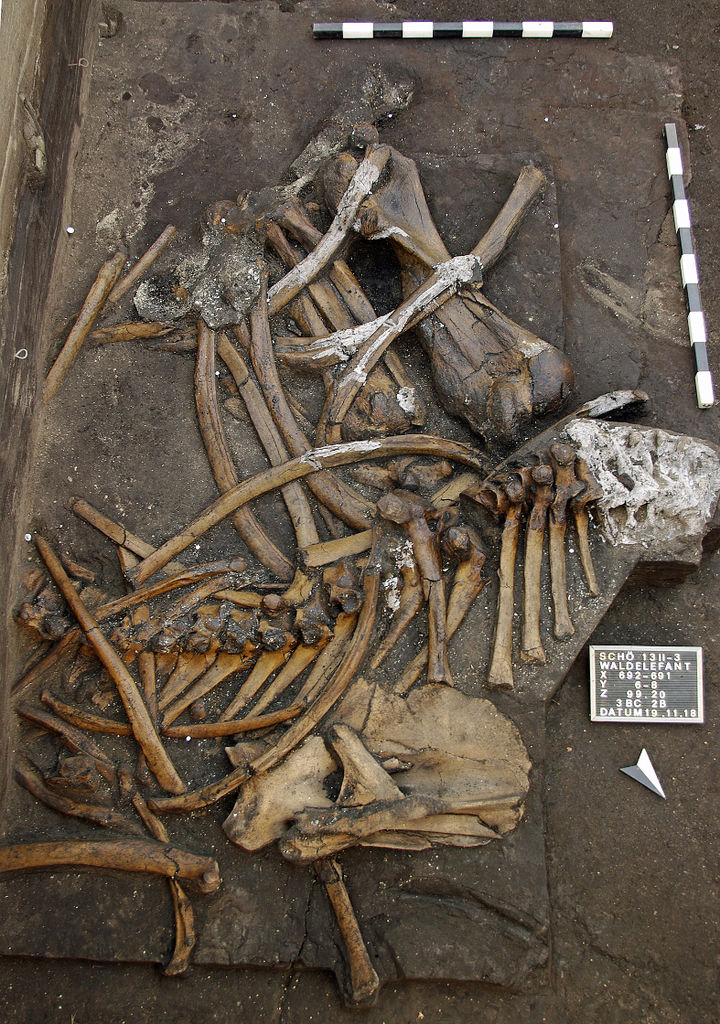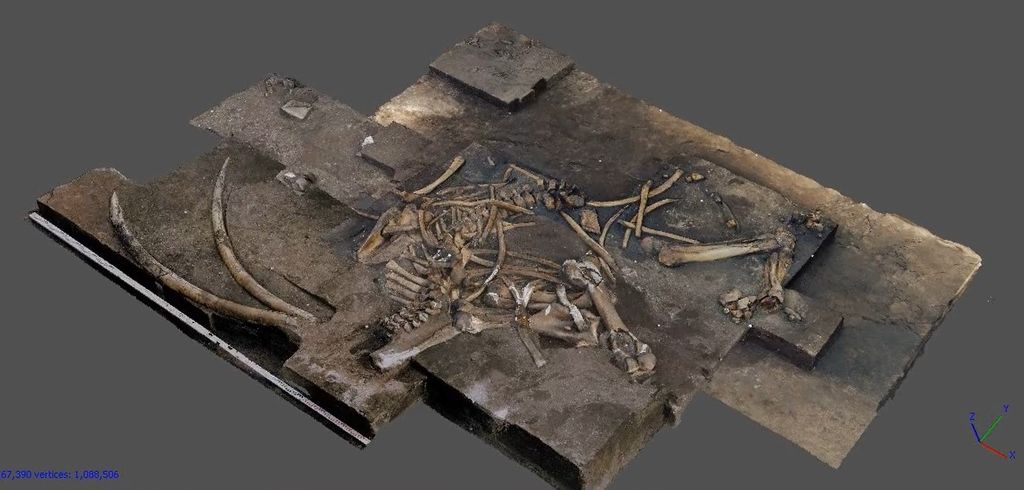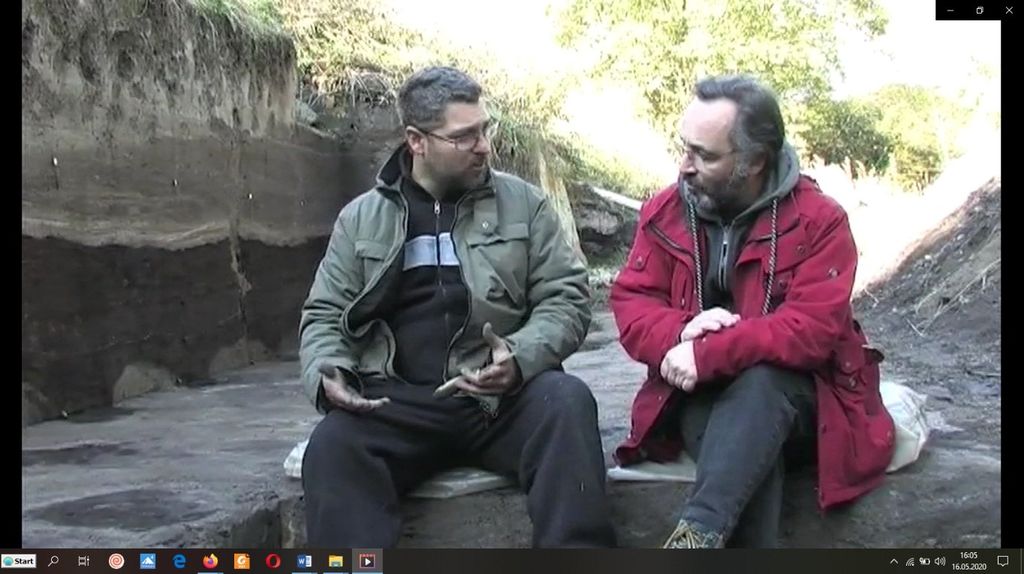
When Elephants lived in Northern Europe
Schöningen, in Germany, is indisputably one of the most important Stone Age sites in the world. It has long been a source of extraordinary information on the flora, fauna, human, and animal species that used to inhabit our planet during Pleistocene, 300,000 years ago.
Today, a new important discovery at this archaeological site gives an essential insight into an unexpected scenario showing how northern Europe might have looked at the time. A team of researchers, led by Jordi Serangeli and Nicholas Conard of Tübingen University, in collaboration with Flavio Altamura of the Department of Ancient World Studies of Sapienza University of Rome, found an almost complete elephant's skeleton together with lithic tools probably used to eat the animal and, at a short distance, a small group of elephants' footprints.
This study, published on the German journal "Archäologie in Deutschland", confirms how those lands, despite the fact that the climate was very similar to the weather today, were inhabited by many wild animals usually considered exotic, such as horses, lions, sabre-toothed tigers and even giant elephants.
As a matter of fact, although the archaeological site is located in north-central Europe, the researchers excluded the possibility of the animal being a mammoth, but rather a Palaeoloxodon antiquus, a type of elephant with straight tusks also identified at several Italian sites, confirming that this species was not found exclusively in warm environments but also much further north.
The elephant found in Schöningen died 300,000 years ago, probably of natural causes, along the bank of an ancient lake located in the area during Pleistocene. Archeozoological analyses confirmed the skeleton belongs to an old elephant, possibly a female, more than 3 metres tall and weighing almost seven tonnes, with more than 2 metres long tusks. The ancient specimen was bigger than a modern African elephant.
Further evidence of these animals inhabiting the area are the dozens of fossilized footprints discovered about 100 metres from the skeleton. "A herd of young and adult elephants must have passed through here – says Flavio Altamura of Sapienza University, in charge of tracks analysis and interpretation – The large animals walked along the old lake's bank, and their feet sank into mud and peat, living round hollows up to 60 cm in diameter. Thanks to the extraordinary conservation status of the organic matter in the Schöningen site, in the footprints, we could even find a few wooden splinters pressed by the elephants' weight."
The elephant's skeleton, found in the old lake, has been preserved remarkably well, helping the archaeologists to clearly identify both tusks, the whole mandible, vertebras, ribs, three limbs and even all five bones sustaining the tongue (hyoid bones).
The signs in the elephant's bones show that many carnivorous animals fed on the remains as well as the Homo heidelbergensis, our ancestor, who took advantage of it: 30 flint flakes and two bones, one of which certainly from a deer, were discovered around the skeleton and some of the elephant's bones. Palaeolithic hunters worked on the remains using the flakes to cut meat, fat, and tendons and they probably used other bone tools to sharpen the lithic ones.
This study is an important piece helpful to recreate not only the geographical area's landscape during Prehistory but also the habits of humans and animals who used to live here.
References:
Elefanten in Schöningen - Jordi Serangeli, Ivo Verheijen, Bárbara Rodríguez Álvarez, Flavio Altamura, Jens Lehmann and Nicholas J. Conard. - Archäologie in Deutschland (2020), 3, pp. 8-13.
Further Information
Flavio Altamura
Department of Ancient World Studies
flavio.altamura@uniroma1.it





